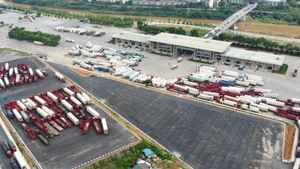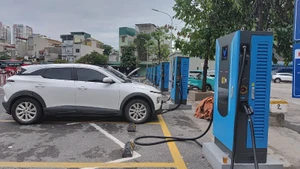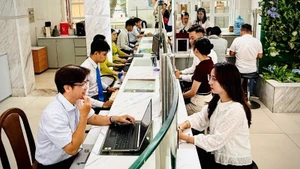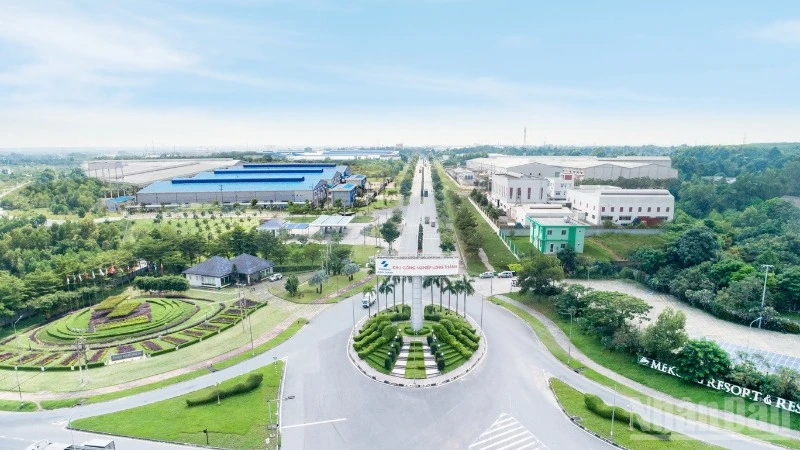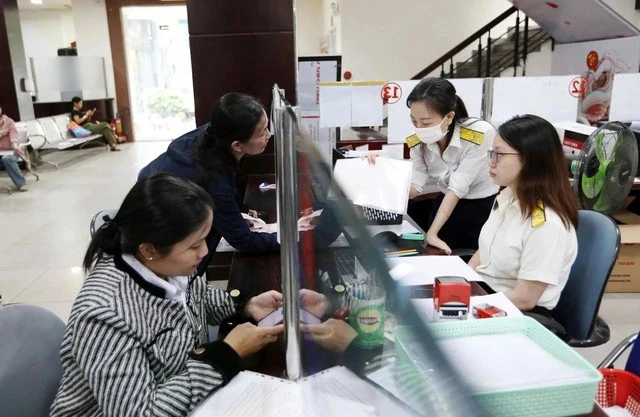On the basis of comprehensive and impressive socio-economic development in 2024, the National Assembly and Government have set a high growth target for 2025, reflecting expectations of stronger improvements in economic activities, creating positive pressure for management so that the Vietnamese economy can firmly enter a new era.
Many policy spaces for innovation
Commenting on the economic picture in 2024 and prospects for 2025, Dr Tran Thi Hong Minh, Director of the Central Institute for Economic Management (CIEM), said that Vietnam has just had a very successful year in foreign investment cooperation.
The confidence of the business community and people in the economic outlook has become more positive, as reflected in the GDP growth of 7.09%, realised foreign direct investment (FDI) reaching 25.35 billion USD, and remittances estimated at 16 billion USD.
There is still a lot of room for policy innovation if these areas can be connected with policies to develop new economic models such as digital economy, circular economy, creative economy, especially through policy testing approaches.
Notably, Director Tran Thi Hong Minh mentioned an important factor in promoting innovation activities with the Politburo issuing Resolution No. 57-NQ/TW (dated December 22, 2024) on breakthroughs in science, technology development, innovation and national digital transformation.
“This shows that the Party and State have proactively completed the policy framework for innovation and creativity and created an exciting atmosphere for the scientific community in the coming time,” said Dr Tran Thi Hong Minh.
In 2025, Vietnam's economy has many opportunities for growth. First of all, the development trend of science and technology can help promote the process of economic restructuring towards increasing industries, activities, and products with higher added value and science and technology content.
Along with that comes the opportunity to continue attracting foreign investment to expand the space for economic growth through technology transfer. Vietnam is also assessed to have the opportunity to significantly increase labour productivity thanks to institutional reform, including apparatus reform and administrative procedure reform.
According to the assessment, Vietnam's labour productivity in 2024 will increase by about 5.88%, higher than the target of 4.8-5.3% set by the National Assembly. This is an important driving force that needs to be promoted in the coming time.
Risks and challenges to growth
In the recently released report reviewing Vietnam's macro-economic performance in 2024 and Economic Outlook for 2025, CIEM pointed out that if we focus on promoting scientific and technological innovation, improving product quality, promoting the development of green industries, facilitating technology transfer and promoting international cooperation, the competitiveness of Vietnamese products will weaken in the short term.
Other risks and challenges are that infrastructure and facilities for green exports are still incomplete; there is a lack of human resources to convert to green production.
In addition, Vietnamese enterprises will face many difficulties in participating in the global supply chain and have not yet created close links in the value chain. The reason is that FDI enterprises already have a network of supporting industrial enterprises; domestic suppliers lack official channels to collect information about the purchasing strategies of FDI enterprises.
In addition, the ability of domestic enterprises to receive technology transfer is still limited; programs to improve competitiveness and innovate the domestic private sector have not yet shown clear effectiveness.
Domestic enterprises are also not used to using modern dispute resolution methods for cross-border trade activities, and policy thinking on accessing and participating in the global value chain has not been completed.
CIEM also noted that world economic growth may recover slowly or even decline in 2025. Therefore, Vietnam needs to soon realise an approach suitable for the rapid development of new technologies and promptly specify criteria on project quality in line with the development orientation of the economy to continue to attract quality and effective FDI. Realising high growth is only meaningful if it is not accompanied by high inflationary pressure.
According to Dennis Quennet, Chief Advisor of the GIZ Macroeconomic Reforms/Green Growth Programme in Vietnam, Vietnam's economic growth results in 2024 will be achieved mainly through trade and investment, macroeconomic stability, and inflation control.
This is also a successful year in terms of state budget revenue and improved labour productivity. Vietnam's economic outlook in 2025 continues to be positive thanks to focusing on implementing the main tasks: continuing to stabilise the macro economy; developing the domestic economy, especially human resources; and reforming the apparatus towards streamlining for effective operation and continuing digital transformation and green transformation.

